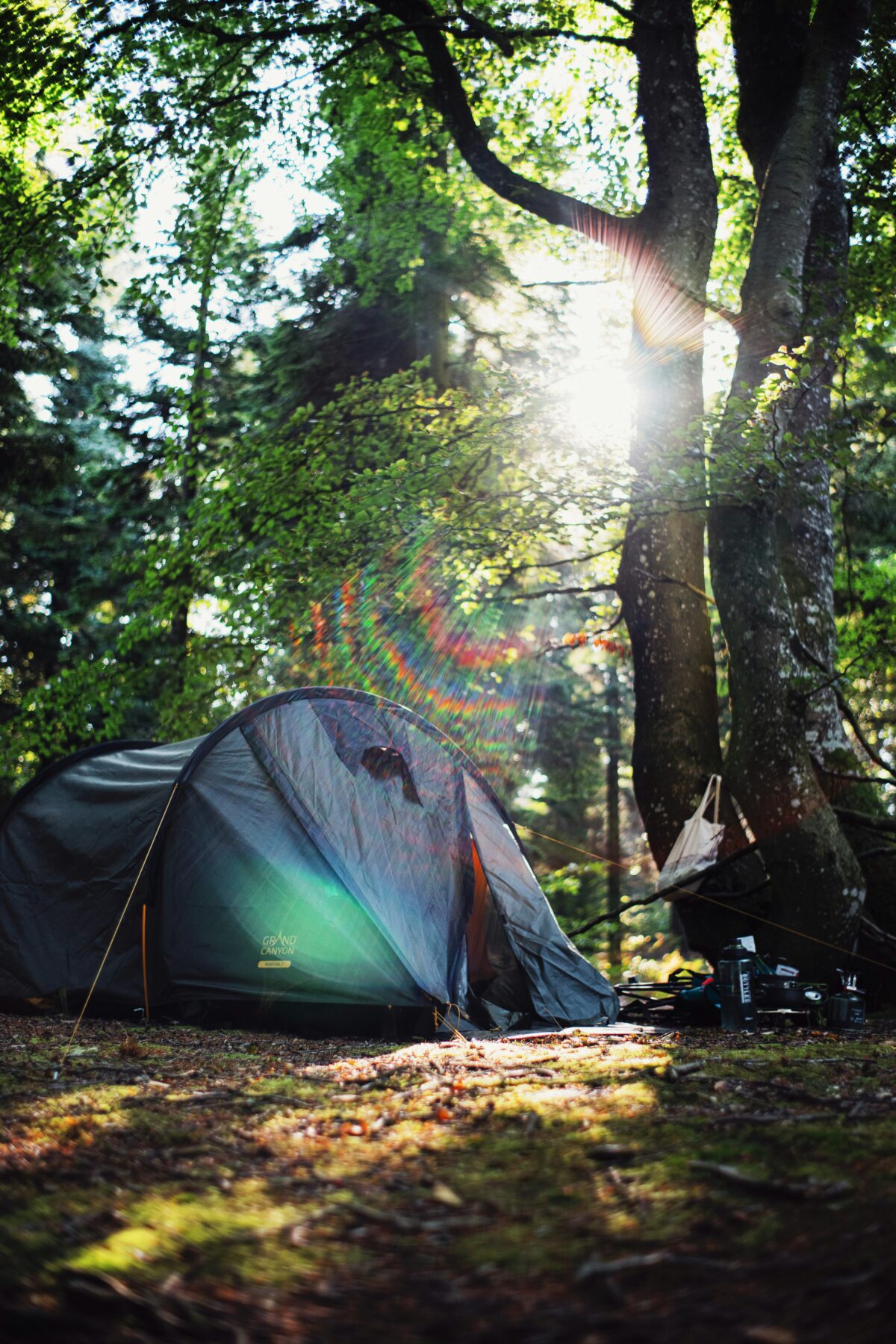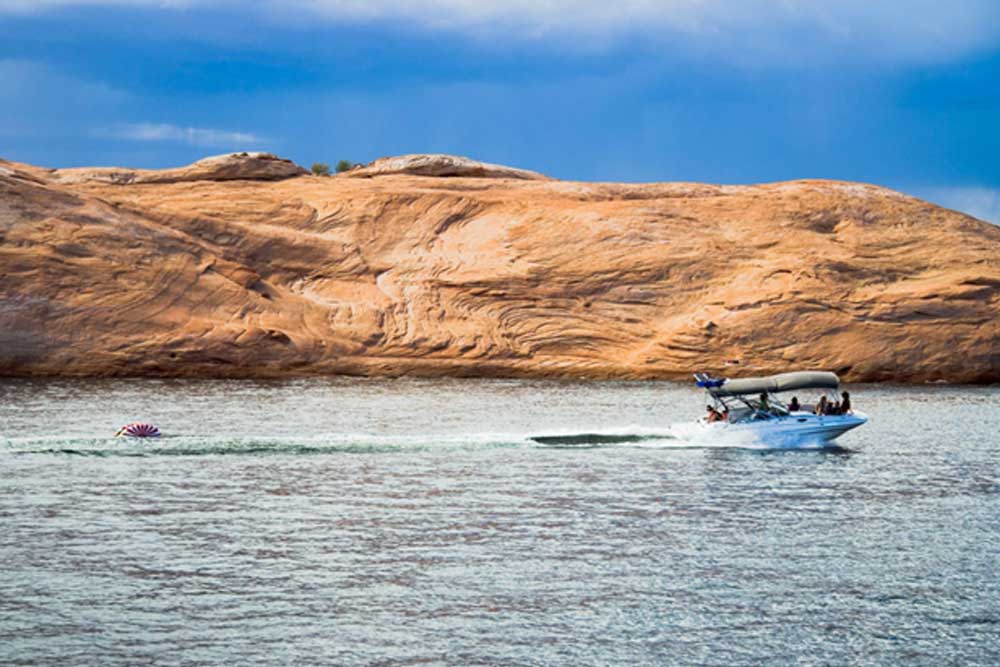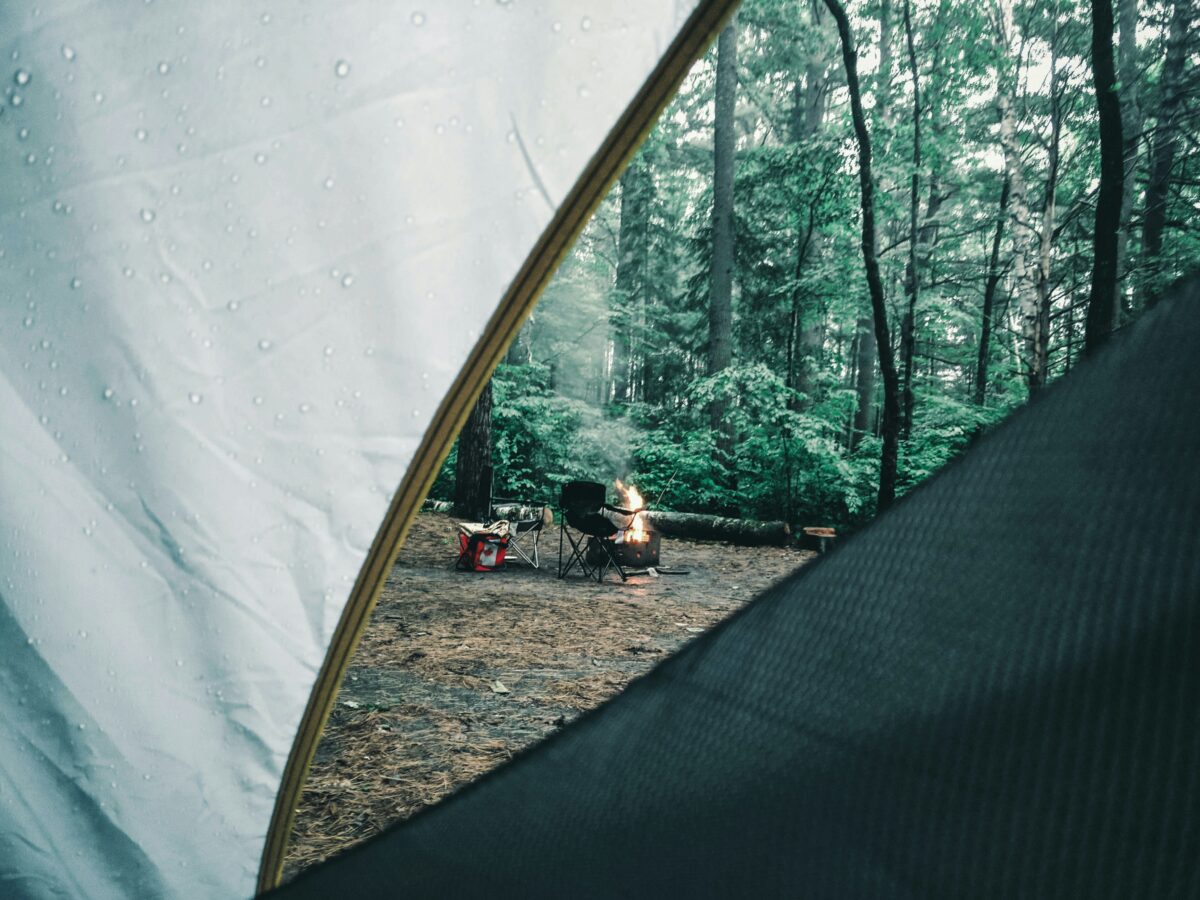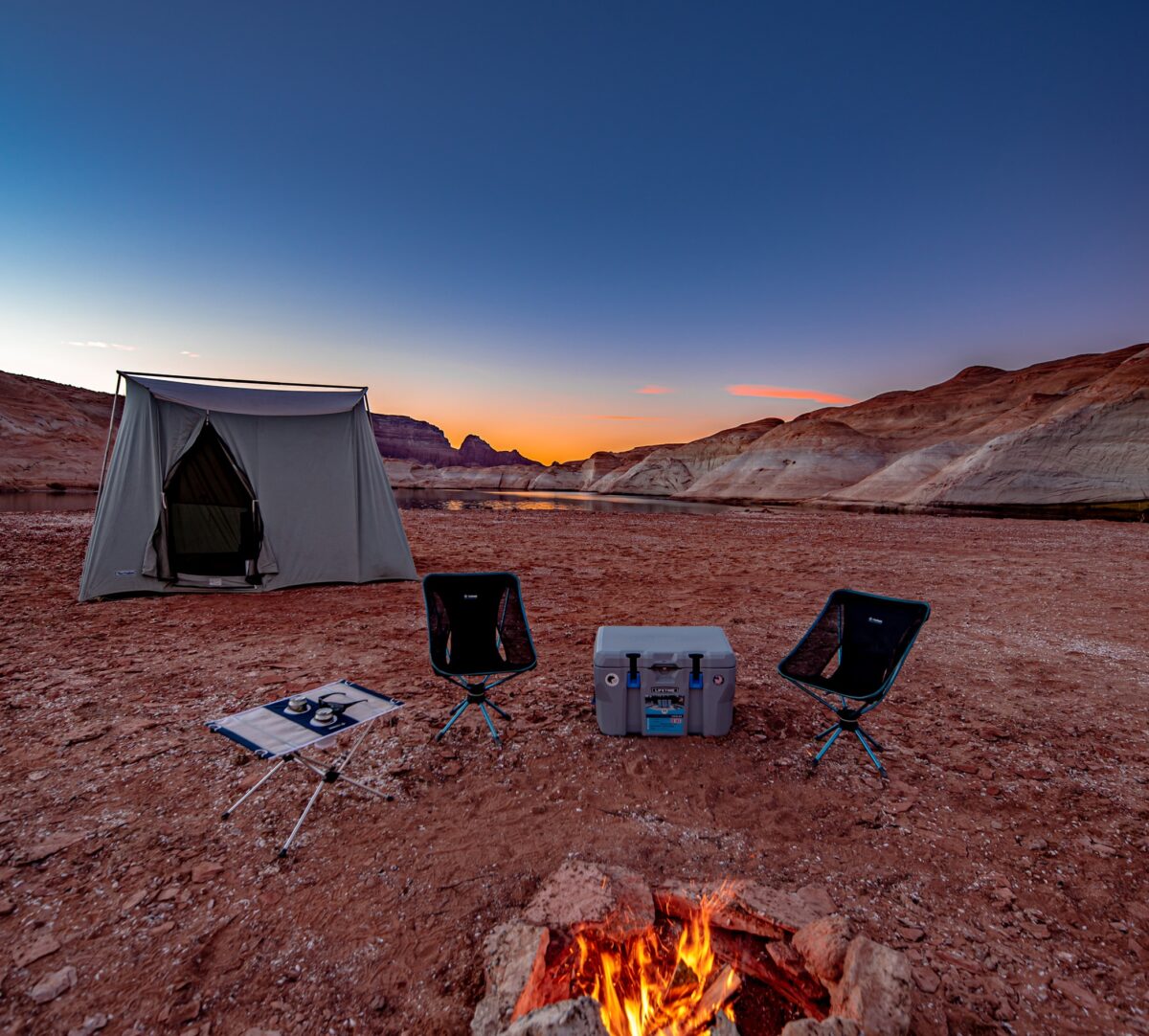The Glen Canyon National Recreation Area is one of the most popular destinations in the Southwest for water-based recreation, but it also offers outstanding opportunities for camping — especially if you’re looking for remote, boat-accessible sites. With more than 1.25 million acres of land and water to explore, the area provides numerous sandy beaches and secluded coves perfect for setting up camp.
In this guide, I’ll go over five of the best Lake Powell remote campsites, their locations, what to expect, and tips for making the most of your trip. This list is based on years of boating and guiding experience in Glen Canyon, with a focus on practical details so you can plan your trip with confidence.
Of course if you’d rather do it with a guide, don’t hesitate to experience the luxury of a guided camping trip from Lake Powell Guide Services.
1. Padre Bay
Padre Bay is the largest expanse of open water on Lake Powell, located about 45 minutes from Antelope Point Marina. It’s surrounded by towering sandstone formations like Tower Butte and Cookie Jar Butte, offering both scenic views and multiple beach options for camping.
Why It’s a Good Camping Location:
- Numerous sandy beaches to choose from.
- Wide, open area makes it easier to find available space.
- Ideal for large groups or multiple boats.
Tips for Camping in Padre Bay:
- Afternoon winds are common; pitch tents farther up the beach from the waterline.
- Bring extra shade — there’s little natural cover here.
- Great location for fishing, especially for smallmouth bass near rocky points.
Access:
Boat-in only. Approximately 45 minutes from Antelope Point Marina, depending on boat speed. Keep in mind that this is the most popular bay for water recreation and camping, so it can get crowded.
2. Dungeon Canyon
Dungeon Canyon is a narrow, protected side canyon about a 1 to 1.5 hour boat ride from Antelope Point Marina . It offers a quieter atmosphere than open-water areas and has small sandy pockets at the back where campers can set up.
Why It’s a Good Camping Location:
- Protected from wind and large wakes.
- Close proximity to the marina makes it convenient for shorter trips.
- Smaller, more private setting than major bays.
Tips for Camping in Dungeon Canyon:
- Space is limited, so it’s best for smaller groups.
- Bring paddleboards or kayaks for exploring side channels.
- Be mindful of sound — the canyon walls can amplify noise.
Access:
Boat-in only, 1 to 1.5 hours from Antelope Point Marina.
3. Face Canyon
Face Canyon is a longer side canyon located approximately 1 hour from Antelope Point Marina. The canyon is known for its high walls, scenic views, and multiple coves suitable for camping.
Why It’s a Good Camping Location:
- Multiple options for beaching and camping.
- Good opportunities for photography due to light and shadow on canyon walls.
- Less boat traffic compared to areas closer to the marina.
Tips for Camping in Face Canyon:
- Some beaches drop off quickly into deep water; use caution when beaching your boat.
- This area offers good night sky visibility for stargazing.
- Pack insect repellent — mosquitoes can be present in summer.
Access:
Boat-in only, about a 1-hour trip from Antelope Point Marina.
- Escalante Arm
The Escalante Arm is one of the most remote and scenic sections of Lake Powell. It consists of a series of long, narrow canyons with numerous beach options.
Why It’s a Good Camping Location:
- Extremely quiet and isolated, ideal for multi-day trips.
- Excellent water clarity and calm conditions in sheltered areas.
- Abundant shoreline to explore.
Tips for Camping in the Escalante Arm:
- Plan your fuel carefully — it’s a long distance from services.
- Carry plenty of drinking water or a reliable water filtration system.
- Check the weather forecast before heading in; afternoon winds can make long crossings more challenging.
Access:
Boat-in only. Closest access is from Bullfrog Marina.
General Camping Guidelines for Glen Canyon
Whether you choose one of the Glen Canyon camping spots above or another location, it’s important to follow best practices to ensure a safe and enjoyable trip.
- Portable Toilets Required
All boat-in campers are required to have and use a portable toilet system. This helps keep the lake clean and prevents pollution. - Leave No Trace
Pack out everything you bring in, including trash and leftover food. Avoid damaging vegetation and minimize your impact on the shoreline. - Water Levels and Beaching
Lake Powell’s water levels fluctuate, sometimes significantly. Before heading out, check current conditions and be prepared for steep beach angles or rocky landings. - Weather Awareness
Afternoon winds are common in summer, and storms can develop quickly. Secure tents and boats properly and avoid crossing large sections of open water during high winds. - Fuel and Supplies
If you’re traveling to more remote areas like the Escalante Arm, plan your fuel carefully and bring all necessary supplies. There are limited services once you leave the main marinas.
Choosing the Right Spot
When deciding which Lake Powell remote campsites are right for your trip, consider:
- Distance from marina: Shorter trips work well for weekend outings, while further locations suit multi-day stays.
- Group size: Smaller coves are better for a couple of tents; larger beaches can accommodate more boats.
- Activities: Fishing, kayaking, hiking, and photography opportunities vary by location.
- Wind exposure: Bays and open-water areas can be windy; side canyons often offer more protection.
Summary
Camping Glen Canyon offers some of the most unique and memorable outdoor experiences in the region. From the wide-open views of Padre Bay to the secluded quiet of Escalantes Arm there are camping spots to suit every style of trip.
By planning ahead, following park regulations, and choosing your campsite based on your group’s needs, you can enjoy a safe, comfortable, and scenic camping experience on Lake Powell.
For the best results, decide in advance how far you want to travel, prepare your boat and gear for self-sufficiency, and always respect the natural environment. With those steps in place, the five Glen Canyon camping spots outlined above can provide an unforgettable trip on one of America’s most beautiful lakes.




